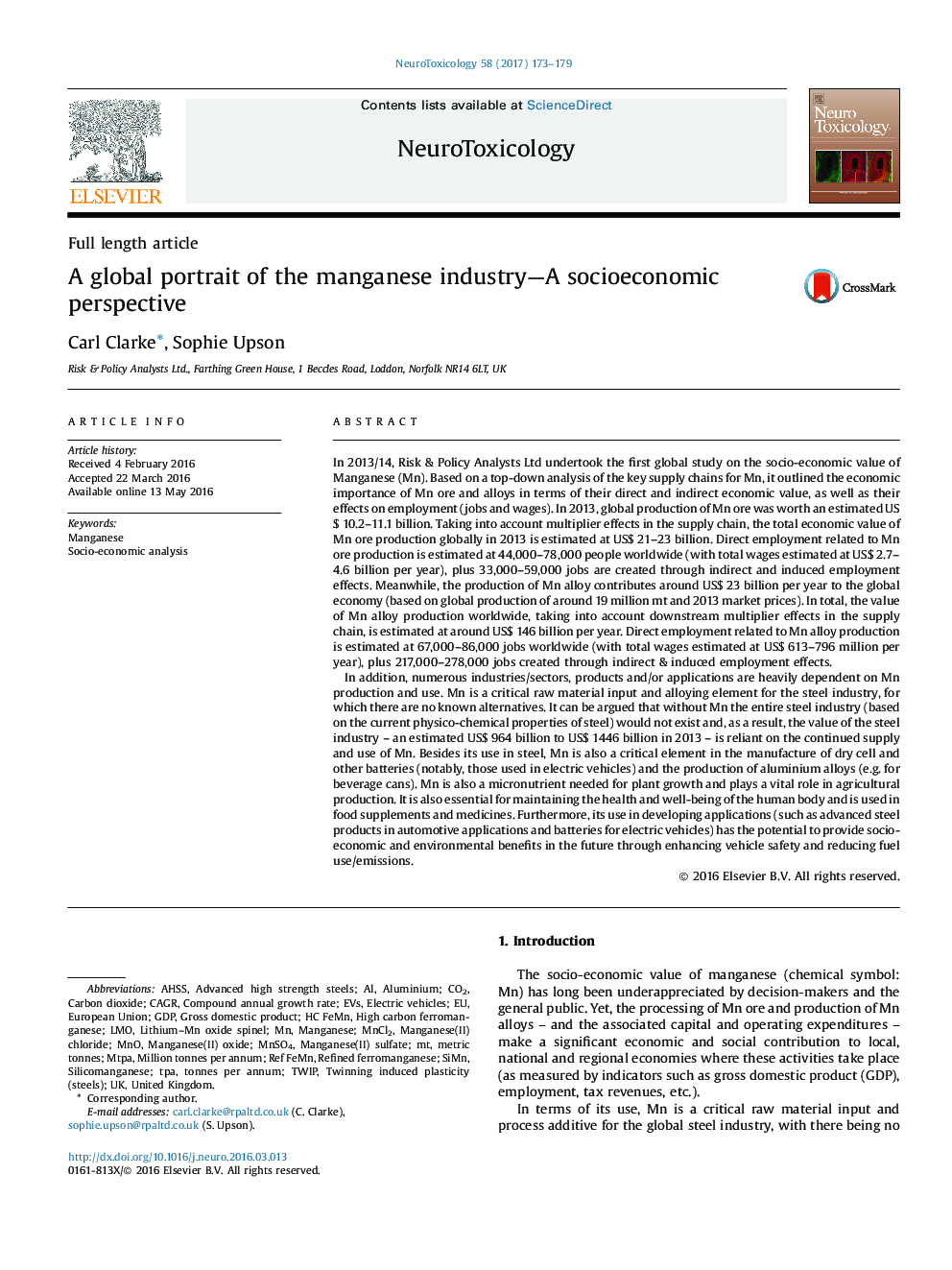| کد مقاله | کد نشریه | سال انتشار | مقاله انگلیسی | نسخه تمام متن |
|---|---|---|---|---|
| 5560879 | 1562036 | 2017 | 7 صفحه PDF | دانلود رایگان |
- Global study of the socio-economic value of Manganese (Mn).
- Total economic value of Mn ore production globally in 2013 was US$ 21-23 billion.
- Total economic value of Mn alloy production globally is US$ 146 billion per year.
- No known alternatives to Mn as an alloying material in the steel making process.
- Other critical applications of Mn include Mn batteries, some aluminium alloys and agriculture.
In 2013/14, Risk & Policy Analysts Ltd undertook the first global study on the socio-economic value of Manganese (Mn). Based on a top-down analysis of the key supply chains for Mn, it outlined the economic importance of Mn ore and alloys in terms of their direct and indirect economic value, as well as their effects on employment (jobs and wages). In 2013, global production of Mn ore was worth an estimated US$ 10.2-11.1 billion. Taking into account multiplier effects in the supply chain, the total economic value of Mn ore production globally in 2013 is estimated at US$ 21-23 billion. Direct employment related to Mn ore production is estimated at 44,000-78,000 people worldwide (with total wages estimated at US$ 2.7-4.6 billion per year), plus 33,000-59,000 jobs are created through indirect and induced employment effects. Meanwhile, the production of Mn alloy contributes around US$ 23 billion per year to the global economy (based on global production of around 19 million mt and 2013 market prices). In total, the value of Mn alloy production worldwide, taking into account downstream multiplier effects in the supply chain, is estimated at around US$ 146 billion per year. Direct employment related to Mn alloy production is estimated at 67,000-86,000 jobs worldwide (with total wages estimated at US$ 613-796 million per year), plus 217,000-278,000 jobs created through indirect & induced employment effects.In addition, numerous industries/sectors, products and/or applications are heavily dependent on Mn production and use. Mn is a critical raw material input and alloying element for the steel industry, for which there are no known alternatives. It can be argued that without Mn the entire steel industry (based on the current physico-chemical properties of steel) would not exist and, as a result, the value of the steel industry - an estimated US$ 964 billion to US$ 1446 billion in 2013 - is reliant on the continued supply and use of Mn. Besides its use in steel, Mn is also a critical element in the manufacture of dry cell and other batteries (notably, those used in electric vehicles) and the production of aluminium alloys (e.g. for beverage cans). Mn is also a micronutrient needed for plant growth and plays a vital role in agricultural production. It is also essential for maintaining the health and well-being of the human body and is used in food supplements and medicines. Furthermore, its use in developing applications (such as advanced steel products in automotive applications and batteries for electric vehicles) has the potential to provide socio-economic and environmental benefits in the future through enhancing vehicle safety and reducing fuel use/emissions.
Journal: NeuroToxicology - Volume 58, January 2017, Pages 173-179
